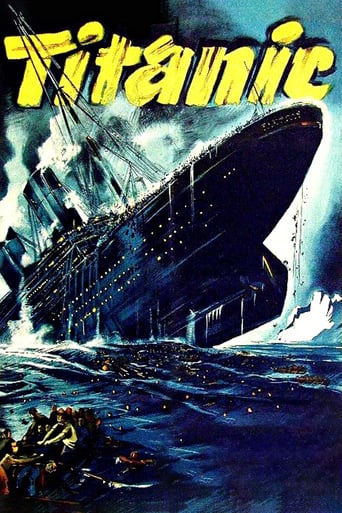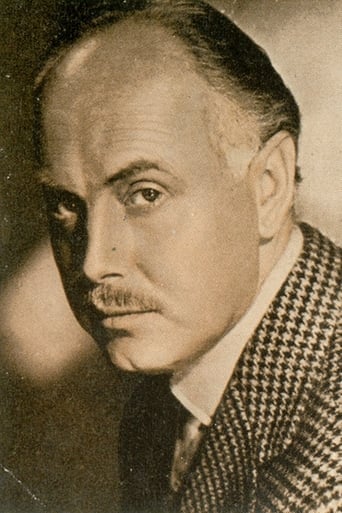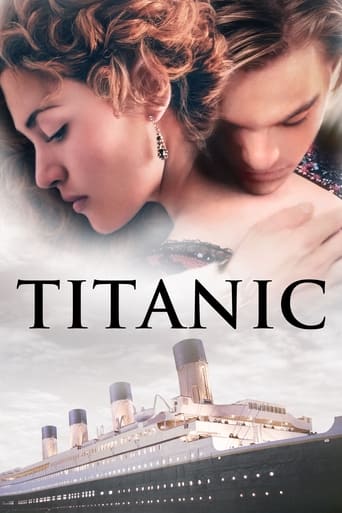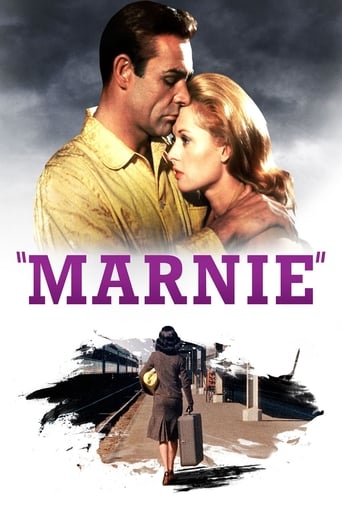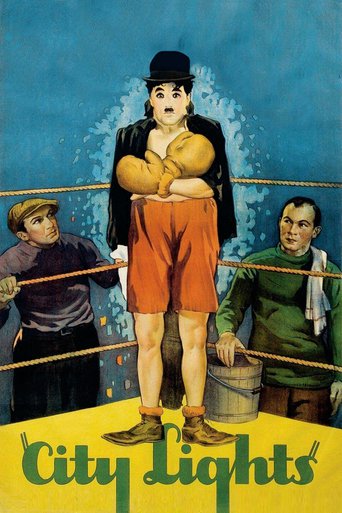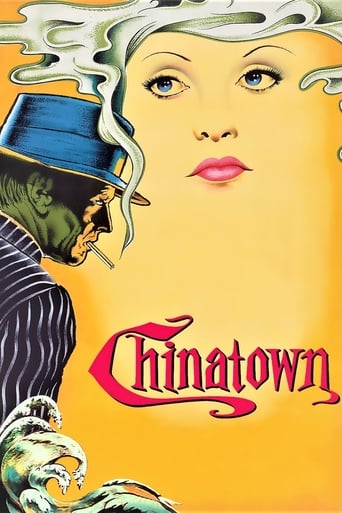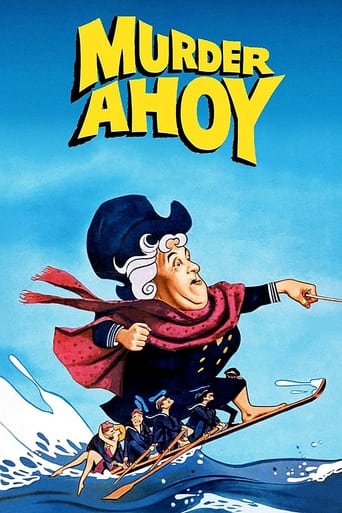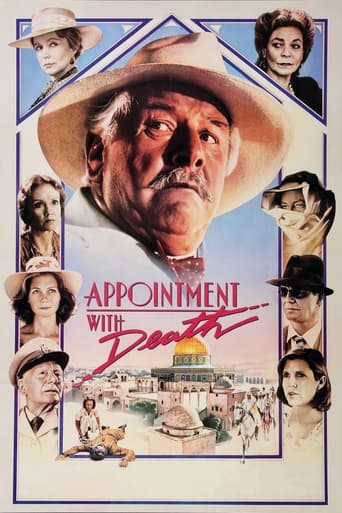Titanic (1943)
This little-known German film retells the true story of the British ocean liner that met a tragic fate. Ernst Fritz Fürbringer plays the president of the White Star Line, who unwisely pressed the Titanic's captain (Otto Wernicke) to make the swiftest possible crossing to New York.
Watch Trailer
Cast


Similar titles
Reviews
A movie that not only functions as a solid scarefest but a razor-sharp satire.
Exactly the movie you think it is, but not the movie you want it to be.
I didn’t really have many expectations going into the movie (good or bad), but I actually really enjoyed it. I really liked the characters and the banter between them.
All of these films share one commonality, that being a kind of emotional center that humanizes a cast of monsters.
BACKGROUND: "Titanic" was a pet project of Nazi Germany's evil propaganda minister, Dr. Goebbels. In the true story of the 15 April 1912 tragedy in which 1,503 people lost their lives, Goebbels saw a grand opportunity to denounce British opportunism, stupidity and greed. Goebbels had the script written by a fanatical Nazi, Zerlett- Olfenius. Direction was entrusted to Herbert Selpin who had successfully handled movie versions of other maritime disasters, despite the fact that Goebbels was well aware that Selpin had little love for the Nazi regime. However, Zerlett-Olfenius was entrusted with shooting the second unit work on location in the port of Gdynia in Poland. In May 1942, whilst Selpin shot the interiors in Berlin, Zerlett-Olfenius was detailed to direct the matching exteriors in Gdynia. When no footage at all arrived from Gdynia, the frustrated Selpin journeyed to that port to investigate. He confronted Zerlett- Olfenius and the two men had a bitter quarrel during which Selpin made many insulting references to the German armed forces. Zerlett- Olfenius reported Selpin to the Gestapo. Selpin was arrested and thrown into jail on a charge of treason. Unwilling to delay shooting and bring the matter to trial, the evil Goebbels ordered the prison guards to murder Selpin in his cell on the night of 31 July 1942. The propaganda minister then gave out that the treasonable Selpin had admitted his guilt by committing suicide. Werner Klinger was contracted to complete the film.However, Selpin had the last laugh after all. When Goebbels viewed the completed picture, he had enough wit to realize that its propaganda effects would be the exact opposite of what he and Zerlett-Olfenius had intended. Not only were the scenes of panic among the passengers uncomfortably akin to the contemporary reactions of German civilians under Allied bombing raids, but the instigator of the whole tragedy, Ismay, was shown to be a corrupt, self-seeking leader, reckless of people's lives in his own lust for power, money and "glory". A Hitler figure, in other words. "Titanic" was shown in Paris (in order to recoup at least part of its enormous cost), but in Germany it was not released at all until 1950.COMMENT:There are a number of movies dealing with the Titanic tragedy, but for sheer entertainment zing and gusto, this version is hard to beat. Not only are special effects absolutely marvelous and the scenes of shipboard panic and mayhem absolutely riveting, but the sets are superb, the costumes startling, and the acting dazzlingly charismatic. Nielsen hugs audience sympathy as the harassed Petersen, Miss Schmitz (despite a long dark wig that is a trifle disconcerting) transforms realistically from riches-into- rescuer, while the stunningly-gowned Heiberg limns the most decorative of high-class vamps and the evil-visaged Wernicke makes a human figure of the luckless Captain Smith. And a special clap to Jolly Marée who performs the sexiest dance number by which all others will now be measured.Selpin's driving, pacey direction, boosted by Behn-Grund's splendid camera-work nails home every hideously fascinating detail of this most terrible of maritime tragedies.
It's a story of the Titanic and it is clear that it influenced the director of the most famous version that goes on for 3 days. What scores points for me with this film is the focus on the wealthy owner of White Star – Sir Bruce Ismay (Ernst Fritz Fürbringer) – and his role in the tragedy. It's known as a German propaganda piece, but this isn't where the propaganda is. There is almost certainly an element of greed and stupidity as Ismay strives for glory. That's a fact, especially born out by the saving pennies on health and safety by not providing enough lifeboats. You also have to question why the Captain increased speed through the iceberg infested waters when every other ship would have slowed down. It's probably (definitely) pressure from Ismay. The propaganda comes from the First Officer Hans Nielson (Petersen) and his voice of reason throughout proceedings. He is the only German aboard the ship and the only man you can trust to know what the right thing to do is. This is despite him never actually doing anything about it as he is only obeying orders. He should have ignored orders but then that is not the message the Nazis would have wanted to put across! And the Titanic wouldn't have sunk with Nielsen at the helm.The Titanic is always a good story so the film is entertaining. I think this version is interesting and had some good scenes – the lowering of a lifeboat from the passenger point-of-view – as well as telling a complete story as it includes the inquest at the end. Of course, this is where we see the injustice from the point of view of the First Officer and it is an injustice. The final caption blaming capitalism for the sinking is, I'm afraid, true in this case. Greed and profit were paramount. As well as the lookout probably needing binoculars/glasses (standard issue on all ships at the time for anyone in the crow's nest), which incidentally, were not provided by Ismay and his great plan. Yet more cost –cutting!
"I watched Titanic when I got back home from the hospital, and cried. I knew that my IQ had been damaged." - Stephen King There are many films about the HMS Titanic and her tragic sinking, but the main 4 are "Titanic", a German propaganda film released in 1943, Jean Negulesco's "Titanic", released in 1953, "A Night To Remember", released in 1958 and regarded by many to be the "definitive Titanic movie", "Raise The Titanic", a ridiculous movie released in 1980, and 1997's "Titanic", James Cameron's box office juggernaut.The 1943 film was directed by Werner Klingler and Herbert Selpin, and eschews historical accuracy in favour for some hilarious German propaganda. The film portrays the crew and wealthy passengers of the Titanic, as well as the chairmen and managing directors of the White Star Line, as being slimy and despicable, concerned only with winning awards, profit, setting records and making money. Everyone in the film bullies servants, makes terrible decisions and is corrupt and incompetent, except for Hans Nielsen, the ship's German First Officer. Nielsen is not simply the only righteous member of the Titanic's crew, but the only person in the film who realises that the actions of those around him will lead to certain disaster.And so the film treats the HMS Titanic, her collision with an iceberg and subsequent sinking, as an allegory for western capitalism, which, like the titular ocean liner, is bloated, accelerative and heading for crisis. The film makes this most explicit by using the upper and lower decks of the ship to highlight social stratification (the rich hobnob on the upper decks while the poor live in steerage compartments), whilst the Titanic's sinking, which was due to the ship travelling too fast in order to break naval records, is shown to be the result of businessmen who were using the ship's lunge for the record books to drive up stock prices.The film ends with the words "The deaths of 1500 people remain unatoned for, an eternal condemnation of the English quest for profit", and then mourns the fact that the underprivileged died whilst those responsible for Titanic's crash escaped Scott-free, fleeing on lifeboats and buying their way out of subsequent law suits (the film is structured as a flashback within a courtroom), a salvation akin to the financial crisis of 2007-2010 and the ensuing bank bailouts (in real life, economic lifeboats are given innocuous names like "Emergency Economic Stabilization Acts").Ironically, the film was quickly banned in Germany, German propaganda minister Joseph Goebbels deciding that the ship's sinking too closely mirrored the fall of the Third Reich. Director Herbert Selpin was himself executed for expressing anti military sentiments.Unlike the German version of the tale, the 1953 "Titanic" has little to offer modern audiences. The film focuses on an estranged couple who are journeying to America. She wants to escape the confines of his high society life in Europe and he gradually learns to let her go. Of course the ship then sinks, putting an end to their petty squabbles.In contrast, "A Night To Remember", released five years later, holds up really well. A mosaic of short scenes, the film is a near documentarian account of the Titanic's launch, maiden journey and sinking. Director Roy Baker offers us glimpses into the lives of a myriad of characters, the film stressing the collective rather than the individual nature of the experience.Like most "Titanic" films, Industrial Age hubris is a big theme, but unlike most of these flicks, the film is more preoccupied with the ship's class divisions. This is made clearest during two sequences, the first in which we jump to and from characters of varying economic standing, and observe the various ways they journey to the ship itself (horses, trains, mules, cars, foot etc), and the second in which the different classes mingle or are forced into lifeboats together, the sinking of the Titanic symbolising the collapse of structured society and the crumbling of the British class system.Unlike the 1953 film, in which almost everyone is American, this is thus a very British film. It's a British production with British actors playing everyone including the Americans, and is one of many early post war British films to react to decolonisation and the dismantling of the British Empire.Social conscience is exactly what 1980's "Raise The Titanic" lacks, the film mostly interested in gimmicks and spectacle. It's a worthless film, notable only for its shots of submersibles, submarines, underwater camera drones and its plot which revolves around a group of salvagers who attempt to resurrect the Titanic, raising her barnacled carcass up from the ocean depths.James Cameron's 1997 "Titanic" is, of course, the big Titanic film which everyone is familiar with. What's interesting is how Cameron pulls subplots, scenes and whole sequences from all the previous Titanic movies. Cameron's bookends with the salvagers, treasure hunters, submersibles and camera drones comes from the 1980 film, whilst the love story, blue diamonds, jewels, villains, accusations of theft, bossy parents, arranged marriages, class constricted heroine (and the fiancé she doesn't love) and free-spirited hero come from the 1958, 53 and 43 films.All those memorable individual shots in Cameron's film of praying characters, ship-builders fine-tuning clocks, children and mothers on beds as the water rises, lovers separated by lowered lifeboats etc etc, are also all pulled together from the previous films.Pretty much the only unique thing about Cameron's film is its spectacular climax. Made after research dives ascertained that the Titanic broke in two before sinking, Cameron's film is the only Titanic movie which details how the ship sank in "sections". And while the other films simply show the ship sinking from afar, Cameron's is a very spatial movie, treating us to a range of complex shots and staggeringly elaborate action sequences as the ship sinks.7.5/10 – Worth one viewing.
This is an extremely difficult film to discuss because of its origins. However, it is influential in the continuing "Titanic" pantheon and merits a viewing by students of the tragedy.First, yes, this was made by Nazi Germany mid-way through World War II, and was designed to make the English (or more accurately, Imperialistic Capitalism) look bad. It has a definite point of view that is extremely unsubtle. But those facts alone do not make it evil or anything like that - all art must be judged on its own merits, not based on its origins, else half the art in the world's museums would be condemned. Propaganda is nothing new and all one has to do is watch something like "Fahrenheit 911" to get a contemporary dose of it. Obviously, if films produced in Nazi Germany trouble you, avoid this one, too.So, taking this film as a film and nothing more, it is fascinating. The "propaganda" is built almost strictly along class lines, illustrating the standard (Biblical, actually) line of "money is the root of all evil." Nothing too controversial about that. In that sense, it almost has a modern point of view that would not look out of place in a Michael Moore "documentary." Everything is all about money - people are introduced as they enter the doomed ship's ballroom by how many millions (of British Pounds) they are worth, and John Jacob Astor actually says at one point that money is the only value he recognizes. The women in the film - and they are almost all quite stunning - take offense at this attitude in their men from time to time, but the real hero is a fictional, moralistic (ha!) German officer who has all the benefit of hindsight but a complete inability to do anything to avert the catastrophe.Scenes from this film were stolen in most later versions - apparently all the people in the lower decks do in these Titanic films is gather 'round and watch one of their members dance or play an instrument - and the similarities to James Cameron's 1997 version are inescapable (e.g., the blue diamond heist, the lifeboat farewell scene, Captain Smith left alone on the bridge). If you watch 1958's "A Night to Remember" after this, you will see some of the same scenes used, such as that of a crewman on the deck laying out the rope to lower a lifeboat, or Captain Smith using a bullhorn to give the "every man for himself" order. But some particular aspects of this film are remarkable. This version has shots fired and people physically attacked - that is still a controversial point that has some good evidence to support it that only fairly recently came to light. Also, they struggle to work in a dig at the Russians, who are said to have confiscated the sympathetic leading lady's estates and made her a pauper (well we better go get them back, right, boys?).Incidentally, this film was released in 1943, which everybody knows was a bad year for the Nazis (with much worse to come), but was produced in 1942, arguably the high point of Nazi conquest. This somewhat explains the film's high production values. Some of the characters reflect the martial times, such as Astor's butler who seems more like a General's orderly (he all but clicks his heels and salutes when entering the great man's presence). There are a few outstanding performances by the women, Sybill Schmitz shining in particular as a weird sort of German stand-in for the famous Molly Brown, but the male leads are almost all caricatures (Astor is portrayed as a financial thug still making deals as the ship sinks, Captain Smith is a cipher controlled by Plutocrat owner Bruce Ismay, and so forth).Speaking of Ismay, he is portrayed as the arch-villain of the tragedy, orchestrating an attempt to break the speed record to New York in order to support his company's stock value (it wasn't publicly traded, so this was completely fictitious). Of course, that never happened, but Ismay and his company DID skimp on things like lifeboats because it would have lowered the value of the views from some top-dollar cabins. In addition, men like (and including) Ismay controlled the rules that set forth how many lifeboats were required on ships like the Titanic, and thus in a roundabout way permitted themselves to save money on boats by not requiring them. So, while the detail is wrong, the film's point is valid: Ismay and his class sacrificed safety in pursuit of the almighty British Pound Sterling.Compare Ismay here to the portrayal in "A Night to Remember," where he is the cipher, not Smith, and helps with the boats before showing his true colors and crawling into one himself. "Remember" was a British film, and not surprisingly, Ismay is portrayed there in a much better light. Which version is more accurate? I think the answer lies somewhere in between, but I think a lot of Englishmen of the time would have agreed more with the German portrayal.Not a great film, but watch it if you want a different take on the tragedy. Who was responsible? This film addresses that question (unlike other versions), and despite all the distortions and inaccuracies and, yes, propaganda, answers it quite effectively.

